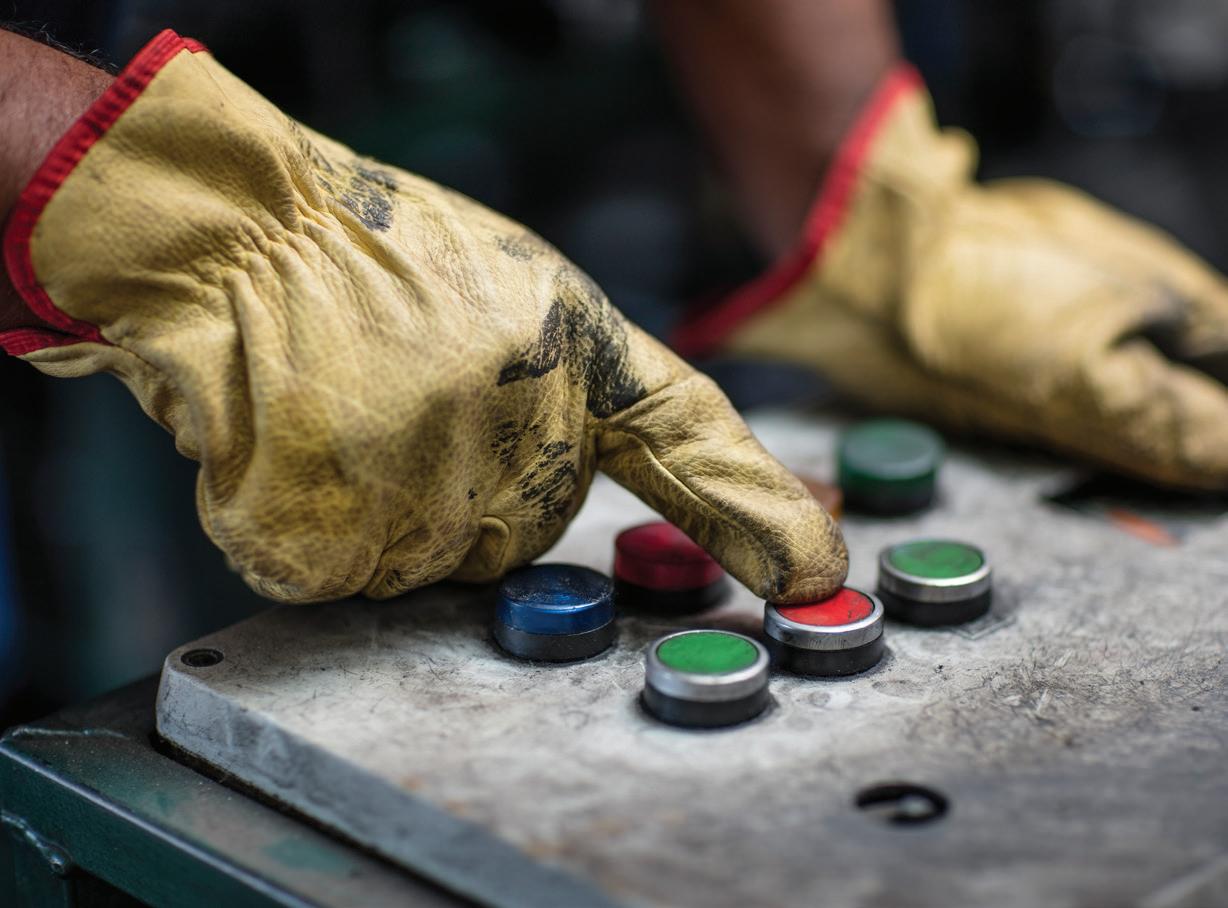
4 minute read
Improve Manufacturing Safety with Help from EMC Insurance
Improve Manufacturing Safety with Help from EMC Insurance
EMC Insurance and CUI Agency
Advertisement
When it comes to workplace loss control and spending your safety budget, there are several techniques you can employ to make sure you get the most bang for your buck. A great place to start is understanding where your losses are currently coming from so you can target those areas when you’re prioritizing safety resources.
How to Determine Your Loss Drivers
The best way to do this is to examine your claims experience (your agent or insurance carrier should be able to provide you with loss runs), looking for trends in frequency (which loss types occur most often) or severity (which loss types are most expensive). Focusing safety resources on the jobs/facilities/areas/causes of loss you have identified will help ensure your safety investment results in reduced losses and measurable cost savings.
In addition to studying your own claims experience, it’s useful to be familiar with overall loss trends in the manufacturing industry. These are likely similar to the claims your organization is experiencing, and they can be a helpful starting point for newer businesses without an extensive loss history.
Overall Manufacturing Loss Trends
According to EMC’s loss data, the five top causes of loss for manufacturers include:
1. Overexertion
2. Struck-by accidents
3. Slips, trips and falls
4. Auto accidents
5. Fire
Ergonomic Issues and Overexertion in Manufacturing
Ergonomic injuries, especially those related to overexertion, are responsible for a high number of claims in the manufacturing sector. They generally occur when tasks are repetitive (require the same motion over and over), or if they require excessive lifting or awkward postures. They’re also common when a workstation isn’t a good fit for the employee using it.
Here are some steps you can take to improve manufacturingergonomics and reduce overexertion injuries inyour workplace:
• Determine which jobs are most likely to have ergonomic risk factors; get insight from your claims history, jobs with especially high turnover or by thinking about the jobs at your organization that nobody wants
• Create an industrial ergonomics program to reduce workers’ compensation claims and risk for employees
• Work with an ergonomics consultant to evaluate and improve your ergonomics program/setup; EMC policyholders have access to in-house ergonomics experts
• Rearrange your workflow to minimize manual material handling; moving materials unnecessarily increases the chance for injuries while making your process less efficient
• Provide training on back and lifting safety using EMC’s online training service
• For employees doing office work, encourage good posture and suggestions for setting up workstations
Reduce Losses from Struck-By Accidents
The majority of struck-by accidents are the result of being hit by heavy equipment (such as forklifts) or being struck by falling or flying objects. While the specific hazards you should address will vary according to your specific operations, here are some general suggestions:
• Develop a forklift safety program
• Ensure forklifts meet the requirements of a forklift inspection checklist
• Use EMC’s forklift operator’s evaluation to ensure operators understand how to operate equipment safely
• Create a machine guarding program
• Do not remove machine guards; train employees on the types of machine guards and their safety requirements
• Follow guidelines for industrial crane safety
• Use a crane inspection report before operation
• Implement regular evaluations for crane operators
Find More Online
Visit EMC’s website to finish reading about the top 5 manufacturing loss drivers and what you can do to address them. You’ll also find links to free loss control resources you can use to level up your safety program.
READ THE FULL ARTICLE: Scan or Click on the QR Code

Learn about EMC’s unique insurance coverage options for manufacturers





